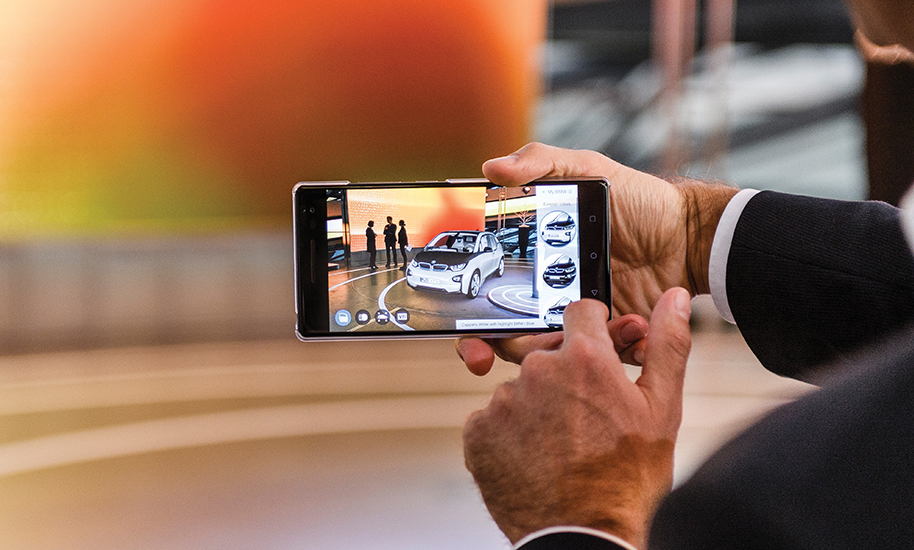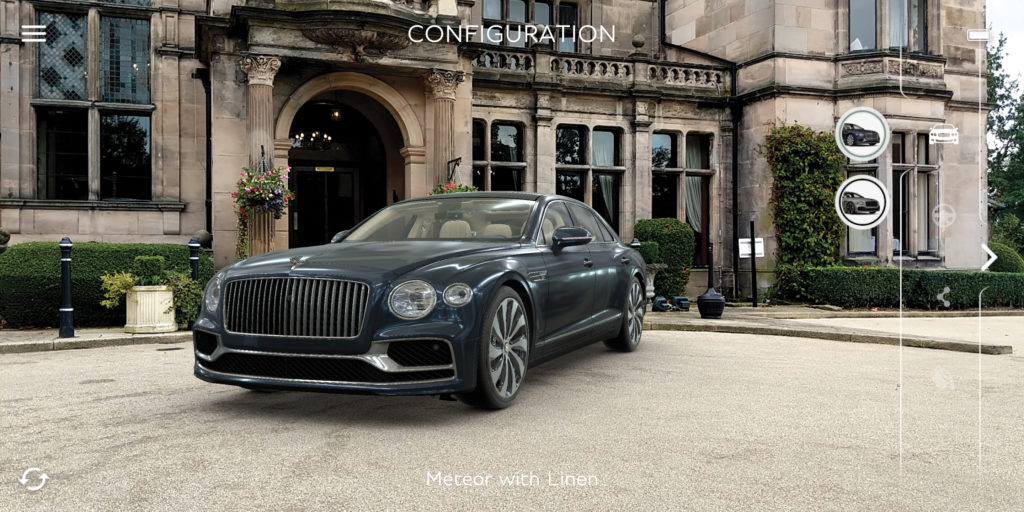Written By Chris Yorgey
What if you could know how a piece of art would look on your wall before buying it? Or if, next time you were out shopping, you could try on a dozen different outfits without bothering to step out of what you are already wearing? Imagine the time and frustration you could be saving by being able to truly see what it is you are buying before you make a purchase. No longer having to imagine it and end up being disappointed when it doesn’t live up to your expectations. All this, and more, is possible when we introduce the technology of augmented reality to the retail experience.
What Is Augmented Reality?
Most people are familiar with virtual reality (VR). Putting on a headset and immersing yourself in a completely artificial world. In contrast, augmented reality (AR) doesn’t introduce an artificial world. Rather, it changes how we view the real-world by layering in artificial objects and imagery.
AR was brought mainstream for the first time several years ago with the popular Pokemon GO mobile game that projected fanciful Pokemon creatures into the real world. Since then, use of the technology has grown across many industries. From construction and maintenance to healthcare and education. But perhaps no other sector has seen as much growth as in retail.
Retailors have focused in on two key ways to use AR technology in order to improve the shopping experience. First, they have made use of AR to improve the customer experience in the store. Second, they have used AR to remove the need for a store altogether by bringing the store to you.
Improving The In-Store Experience
Imagine you are out shopping and see an amazing, eye-catching dress that you must have. You grab one off the rack and take it back to the fitting room to try it on. You step into it and set the lights in the fitting room to simulate a romantic candle-lit dinner. But in the dim light, the color of the dress doesn’t dazzle, and the size is just a little too big. You need it in another color and a size smaller. So, you tap on the AR mirror in front of you, scan through the available colors and land on a stunning red. Moments later you hear a knock on the door and a store associate slips you your dream dress. Experiences like this are beginning to pop up at select luxury retailors, such as Neiman Marcus, and the simplicity it brings to the shopping experience is unmatched.
AR can also enhance your in-store experience by making it easier to find what you are looking for using a technology called wayfinding. Let’s say you are in a store and can’t find the shoe section. Wayfinding allows your phone to superimpose a virtual “yellow brick road” that shows you how to get from where you are to where you want to go. The home improvement store Lowe’s has already put this technology to work in their stores guiding customers through the isles. Similarly, brands like American Apparel are using AR to allow shoppers to see more information and reviews on the clothing they have on display.
Eliminating The Store
In the past decade we have seen a dramatic shift in the retail experience from traditional retail to e-commerce. This dramatic shift has been primarily driven by one thing: convenience. Not needing to spend time driving to the store means that we have more time to dedicate to more important tasks. And, while e-commerce has put many brick-and-mortar stores out of business, e-commerce still only makes up just over 10% of all retail sales in the US. As a society, we are saving the small trips by buying online, but the bulk of shopping is still done in person. Which leaves the question: why?
There are many factors that keep us going into stores, but when it comes to items like clothing and jewelry, the main factor is that we want to know how it is going to look on us. Luxury retailors understand this and are looking to AR as a way to combine the convenience of e-commerce with the confidence that comes from buying in person. Brands like De Beers, Tissot and Gucci are creating AR applications that allow you to see what their products would look like on you. All from the comfort of your own home.
Luxury car buying is also seeing significant advancements from brands like Bentley, BMW and Land Rover. Bentley has launched a new augmented reality app to showcase the world’s finest touring sedan, the all-new Flying Spur. The app will allow users to explore the exterior and interior of the car in two different specifications and take the car on an augmented reality test drive. BMW created an AR application that allows you to configure a car and then see what it would actually look like sitting in your driveway. Land Rover lets you ride along on a virtual test-drive from the comfort of your own home.
Creating A Connection
Luxury brands are finding more ways to use AR than simply tying into the purchasing experience. They are using it as a way to create and maintain a connection with their customers. Burberry, for example, added the ability for anyone using their app to digitally surround themselves with Burberry-inspired artwork. Similarly, Dior gave users of their app a virtual backstage pass to a fashion show, allowing their customers to peak behind the curtain to see all the work that goes into creating their fabulous runway shows. Neither of these brands are using AR as a direct part of the sales process, but rather as a way to stay close to their customers and build brand awareness.
An Ongoing Evolution
As AR technology continues to advance, it is likely we will see more companies integrating it into their retail experience. Be that in the store or from the comfort of your own home. AR may simplify the buying experience and give us greater confidence in the purchases we make. In the past, it was personal attention that set companies apart. But with the growing popularity of e-commerce, it will be the willingness of companies to accept and embrace technology like AR in order to provide a personalized experience that will set them apart.






